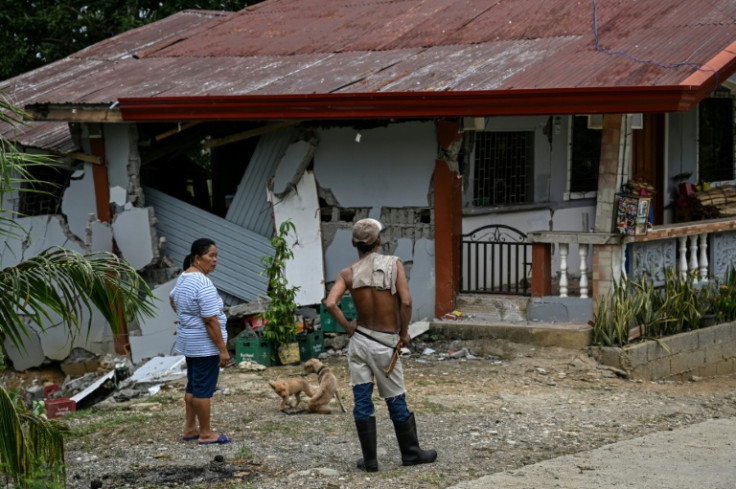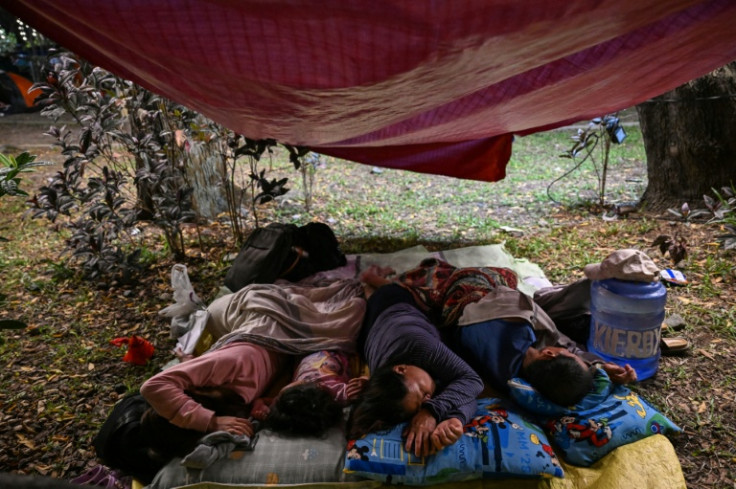Ring of Fire Unrest: Fifth Major Earthquake in Two Weeks Rattles the Philippines
Experts warn of rising seismic activity as aftershocks shake communities across Luzon, Visayas and Mindanao

A magnitude 5 earthquake struck the province of Zambales in the Philippines on Saturday afternoon, the Philippine Institute of Volcanology and Seismology (PHIVOLCS) confirmed, marking the fifth significant tremor to hit the country since September 30.
The quake, which occurred at 5:32 p.m. local time, had its epicenter located 19 kilometers east of Cabangan town, with a depth of 100 kilometers.
Authorities said the quake was tectonic in origin, meaning it was caused by the movement of the Earth's crust rather than volcanic activity.
According to PHIVOLCS, Intensity III shaking was felt in Cabangan and in the provincial capital, Iba, while Intensity II tremors were recorded in parts of Bulacan, La Union, Nueva Ecija, Pangasinan, and Tarlac, as well as in the towns of Botolan, Subic, and San Marcelino in Zambales.
No Damage, But Aftershocks Possible
Initial assessments indicated no major damage or casualties, but experts warned that aftershocks may follow.
'The earthquake was of tectonic origin, and while no damage has been reported, we advise residents to remain alert for possible aftershocks,' PHIVOLCS said in its evening advisory.
Residents across the region reported feeling the shaking for several seconds, with some describing swaying furniture and rattling windows. In coastal towns, locals briefly moved away from shorelines as a precaution, though no tsunami warning was issued.
'It started gently, then got stronger for a few moments,' said Carmela Rojas, a café owner in Cabangan. 'It reminded us how fragile life can be. Earthquakes here have become almost weekly.'

A Series of Quakes Across the Philippines
Saturday's tremor came one day after a powerful magnitude 7.4 earthquake and a magnitude 6.8 aftershock struck Davao Oriental, killing at least six people and injuring dozens. Those twin quakes were felt across Mindanao and as far north as the Visayas.
The Zambales quake is now part of a growing list of significant seismic events that have rattled the Philippines over the past two weeks.
- September 30: A magnitude 6.9 earthquake hit Bogo City, Cebu, affecting more than 200,000 families and damaging nearly 80,000 homes.
- October 10: Two powerful "doublet" quakes struck offshore Manay in Davao Oriental, triggering hundreds of aftershocks.
- October 11: The Zambales quake added another tremor to what experts are calling an "active seismic window" for the Philippine archipelago.
Since the Cebu quake, PHIVOLCS has recorded over 10,000 aftershocks, while nearly 800 were reported following the Davao Oriental tremors.
A Nation on Edge
The Philippines sits on the Pacific Ring of Fire, a region notorious for frequent earthquakes and volcanic eruptions. The country experiences an average of 20 earthquakes per day, though most are too weak to be felt. However, the recent succession of strong quakes has left many Filipinos uneasy.
'This series of events is not unusual given the Philippines' location,' explained Dr. Teresita Bacolcol, PHIVOLCS Director. 'What is concerning is their frequency and spread across different fault lines, from Cebu to Davao to Zambales, which reminds us of the country's complex tectonic setup.'
On social media, residents across Luzon shared videos of shaking chandeliers and rippling water in glasses. The hashtag #EarthquakePH trended briefly on X (formerly Twitter) as users expressed concern and urged preparedness.
A magnitude 5.0 #earthquake struck Cabangan, Zambales at 5:32 p.m. on Saturday, October 11, 2025.
— ABS-CBN News (@ABSCBNNews) October 11, 2025
Aftershocks are expected. #EarthquakePH #LindolPH #lindol | via @phivolcs_dost pic.twitter.com/i6zeTvZQS7
No Tsunami Threat, But Caution Urged
Authorities have assured the public that no tsunami threat exists, as the quake's epicenter was inland and relatively deep. Still, emergency agencies reminded residents in affected areas to review their evacuation plans and check their homes for structural damage.
The Office of Civil Defense (OCD) in Region 3 said it was coordinating with local governments in Zambales and nearby provinces to monitor the situation.
'So far, no casualties or major structural damages have been reported. We are on alert status and continue to assess critical facilities,' the OCD said in a statement.
Staying Prepared
Experts continue to urge the public to remain vigilant. PHIVOLCS advised residents to keep emergency kits, know their evacuation routes, and secure heavy furniture and appliances to prevent injury during tremors.
'Preparedness saves lives,' Dr. Bacolcol added. 'We cannot predict earthquakes, but we can reduce their impact through awareness and readiness.'
For now, the people of Zambales, and much of the Philippines, are once again reminded of life along the fault lines. The earth may have calmed for the moment, but for many, the shaking never truly stops.
© Copyright IBTimes 2025. All rights reserved.




















